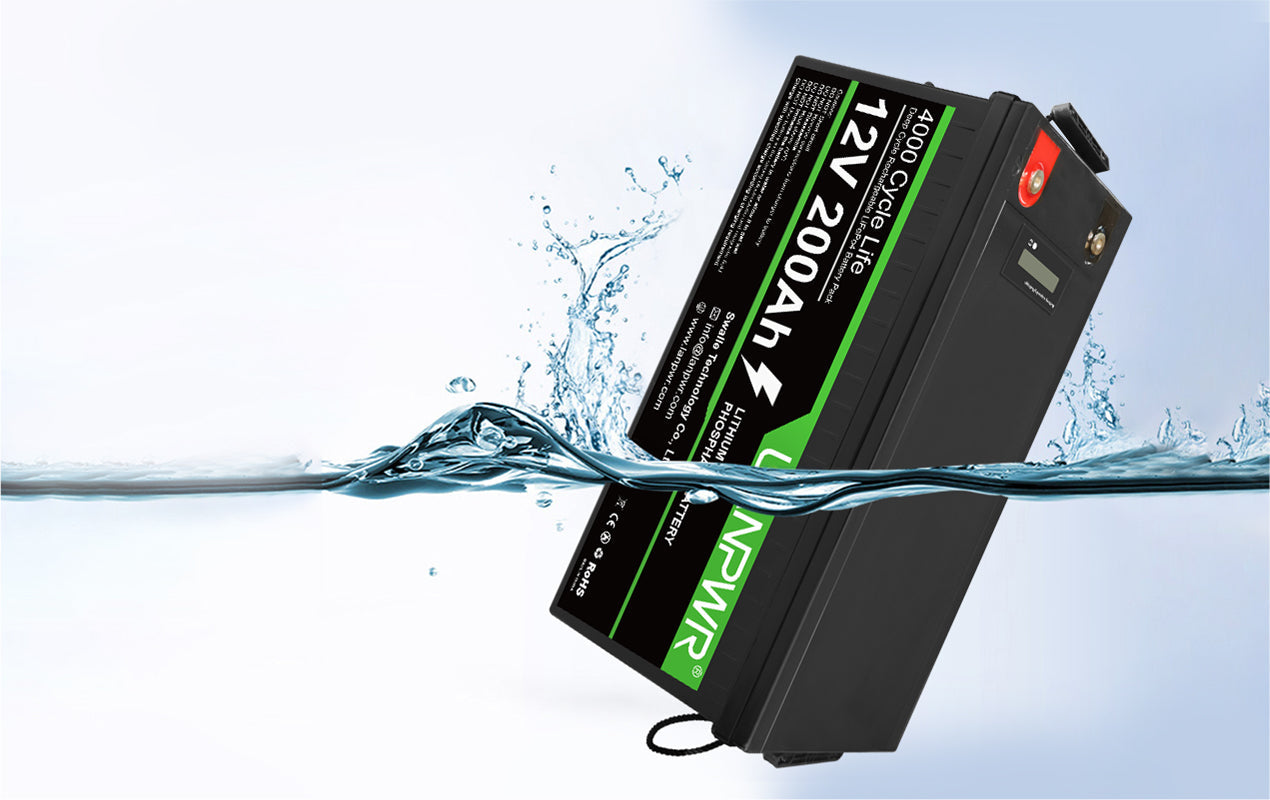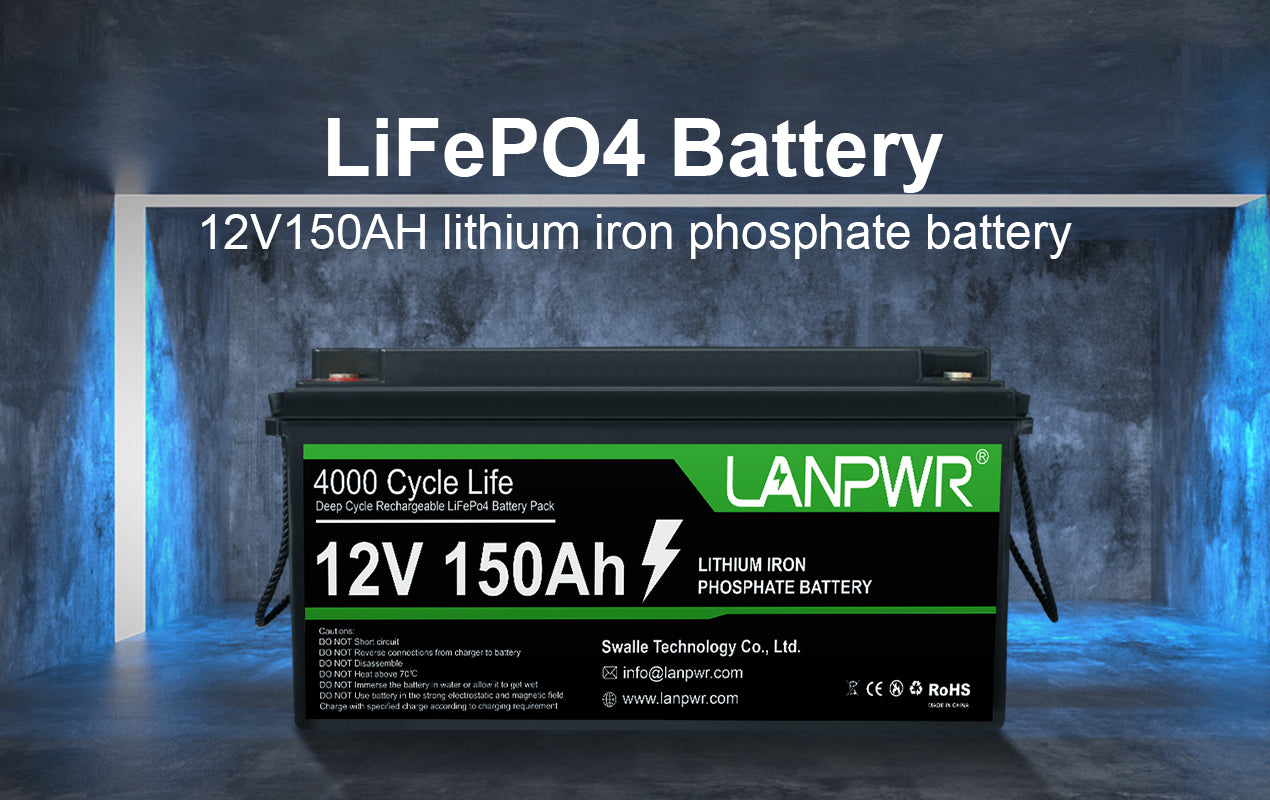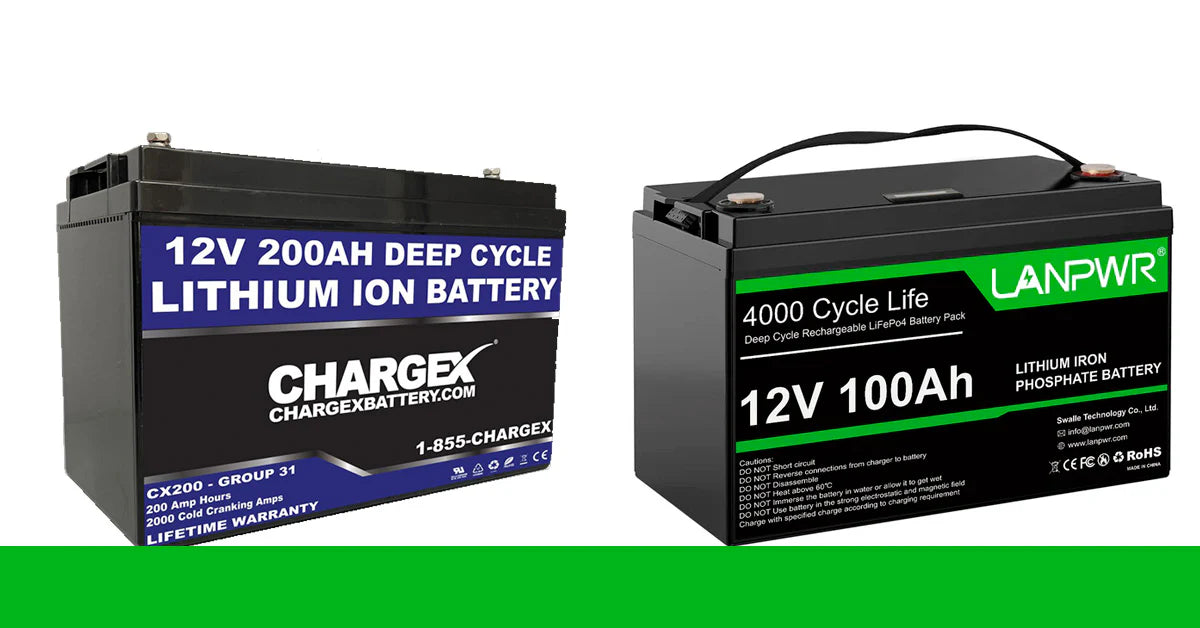Introduction to LiFePO4 Batteries
Understanding Lithium Iron Phosphate
Lithium iron phosphate (LiFePO4) represents a significant advancement in battery technology, particularly suitable for marine environments where safety and efficiency are paramount. This type of lithium battery distinguishes itself through its chemical composition, contributing to its stability and long lifespan. Unlike traditional lead acid batteries, LiFePO4 batteries are inherently safe, have a much lower risk of thermal runaway, and maintain their capacity over many more charge cycles with minimal maintenance required.
The benefits of using LiFePO4 batteries in marine applications are manifold. These lighter batteries offer a higher energy density than their lead-acid counterparts, making them ideal for marine applications where weight and efficiency are critical factors. The reduced weight leads to less fuel consumption and increased stability in water. At the same time, the higher energy density means that LiFePO4 batteries can store more energy, allowing for longer voyages without frequent recharging.
Why LiFePO4 is Extremely Safe for Marine Use
Safety is a crucial consideration in marine applications, and LiFePO4 batteries excel in this regard due to their chemical and structural stability. This stability minimizes the risk of catastrophic failures, such as explosions or fires, which are more common in batteries with higher volatility. The thermal properties of LiFePO4 batteries also ensure that they operate effectively under a wide range of temperatures, making them suitable for varied marine climates.
Moreover, the phosphate in the battery composition forms a strong bond with lithium ions, a critical factor in the battery's resilience and safety profile. This bond prevents the lithium ions from being released as a gas, which can lead to explosions in other lithium batteries. This safety feature is vital in marine settings, where exposure to elements like salt water and varying temperatures can stress battery systems, potentially leading to failures.
The Rise of LiFePO4 in Marine Applications
The transition from traditional lead acid batteries to LiFePO4 in marine applications reflects a broader shift towards more sustainable and efficient energy solutions. With its unique challenges and requirements, the marine industry has found in LiFePO4 a solution that meets and often exceeds the performance criteria required for modern maritime operations. This shift is driven by the need for more reliable power sources to handle the demanding conditions of marine environments without frequent maintenance.

LiFePO4 batteries have gradually gained popularity as boat manufacturers and owners recognize these batteries' long-term benefits. These benefits include greater energy efficiency, reduced environmental impact due to fewer battery replacements, and lower operational costs. The industry’s move towards greener and more technology-driven solutions has further facilitated the adoption of LiFePO4 batteries, aligning with global trends toward environmental sustainability and energy efficiency.
The transition from Traditional Batteries to Lithium Battery Solutions
The marine industry’s adoption of LiFePO4 batteries marks a significant energy storage and management evolution. Initially, the high upfront cost of lithium batteries posed a barrier; however, their long-term cost-effectiveness, coupled with superior performance characteristics, has justified the investment. Traditional lead acid batteries, while initially cheaper, require frequent replacements and maintenance, which can disrupt marine operations and increase total ownership costs.
Moreover, environmental regulations increasingly push the marine industry towards solutions that minimize ecological impact. LiFePO4 batteries, with their longer life cycles and absence of toxic heavy metals, present a far more environmentally friendly option than lead-acid batteries. This compliance with environmental standards helps marine operators reduce their ecological footprint and aligns with global maritime regulations that are increasingly stringent on environmental conservation.
Key Features of LiFePO4 Batteries for Marine Use
Battery Management Systems (BMS)
Integrating a Battery Management System (BMS) is essential in maximizing the potential and longevity of LiFePO4 batteries, particularly in the rigorous conditions of marine use. A BMS serves as the brain of the battery pack, monitoring and regulating its function to ensure optimal performance. It provides critical safeguards against common battery issues such as overcharging, deep discharging, and overheating, which is particularly important in marine applications where battery reliability is crucial.
The role of a BMS extends beyond safety; it significantly enhances battery efficiency. By ensuring that all cells within the battery pack are balanced and operating optimally, the BMS helps maintain the battery's overall health, prolonging its lifespan and ensuring consistent performance. This is particularly crucial in marine settings, where power demands vary significantly, and maintaining a reliable power supply is essential for safety and operational efficiency.

Superior Charge Cycles and Battery Life
LiFePO4 batteries' longevity and robustness are among their most valued features in marine applications. These batteries can withstand thousands of charge cycles with only minimal degradation in performance, a stark contrast to traditional battery types used in aquatic settings. This durability ensures reliable power and contributes to the overall cost-effectiveness of marine operations.
LiFePO4 batteries exhibit superior cycle life due to their stable lithium iron phosphate chemistry, which undergoes less strain during charge and discharge cycles than other battery chemistries. This stability means that LiFePO4 batteries can repeatedly be brought to a low state of charge without significant damage. This is ideal for marine applications where complete recharging may not always be possible.
Understanding Charge Cycle and State of Charge
Understanding the charge cycle and state of charge (SoC) is crucial for maximizing the performance and lifespan of LiFePO4 batteries. A charge cycle refers to charging a battery to total capacity and then discharging it to a set level. LiFePO4 batteries can handle many such cycles with minimal loss in efficiency, which is particularly important in marine applications where batteries are regularly cycled between various states of charge.
The SoC measures the current amount of energy in the battery compared to its full capacity, expressed as a percentage. Tracking the SoC helps manage the battery's health and ensure it operates within safe and efficient parameters. Proper management of the SoC through a BMS can significantly enhance the battery's operational efficiency and extend its life, as it prevents the battery from operating in extremes of high or low charge, which can be harmful over time.
Practical Applications in Marine Settings
LiFePO4 Batteries for Trolling Motors
Trolling motors are a staple in recreational and professional fishing; choosing a battery is crucial for efficiency and reliability. LiFePO4 batteries are increasingly being chosen for this role due to their lightweight and high energy efficiency, which are particularly beneficial in maintaining the boat's balance and performance. These batteries provide a reliable power source for trolling motors, enhancing the fishing experience by allowing extended periods on the water without frequent recharging.
There are numerous specific benefits of LiFePO4 batteries for trolling motors. They include a more consistent power delivery, ensuring the engine operates smoothly even at varying speeds. This is particularly important for fishing, where precise control of the boat's speed and maneuverability can directly impact success. Additionally, the reduced weight of LiFePO4 batteries compared to traditional lead acid batteries allows for a lighter boat, improving speed and fuel efficiency and reducing wear and tear on the motor.

Benefits Specific to Trolling Motors
The advantages of using LiFePO4 batteries in trolling motors extend beyond simple operational efficiency. These batteries provide a steadier voltage output throughout their discharge cycle, which is crucial for the optimal performance of trolling motors. This consistent power output helps avoid the power drops associated with lead-acid batteries, which can affect the trolling motor's effectiveness and the overall fishing experience.
Moreover, LiFePO4 batteries' quick recharge capability means less time is spent waiting for batteries to recharge, thus maximizing time on the water. This feature is especially beneficial during long fishing trips or tournaments where time is of the essence. The longevity and durability of LiFePO4 batteries also mean that they are less likely to need replacement, ensuring that fishermen do not face unexpected failures or maintenance issues during critical times.
Case Studies or Examples
Numerous case studies highlight the effectiveness of LiFePO4 batteries in powering trolling motors across various fishing vessels. For instance, a study involving small fishing boats on the Great Lakes demonstrated that boats equipped with LiFePO4 batteries experienced fewer interruptions due to battery issues and reported overall better satisfaction with the battery performance. Another example comes from coastal fishing operations in the Gulf of Mexico, where operators noted a significant improvement in the manageability and reliability of their trolling motors when they switched to LiFePO4 batteries.
These real-world applications underscore the reliability and efficiency of LiFePO4 batteries, making them a preferred choice for fishing enthusiasts and professionals alike. The benefits are clear: longer operating times, reduced maintenance, and enhanced performance, all of which contribute to a superior fishing experience.
Configuring Your Battery Bank
Configuring an influential battery bank is essential for maximizing the potential of LiFePO4 batteries in marine applications. A well-planned battery bank not only ensures a continuous and reliable power supply but also enhances the overall efficiency of the energy system on board. This is particularly important in marine settings, where power needs vary significantly, and reliability can mean the difference between safety and danger.
The design of a battery bank using LiFePO4 batteries should consider several factors, including the total energy requirements of the vessel, the typical duration of voyages, and the specific energy demands of onboard systems. Proper configuration not only helps meet the energy demands efficiently but also maintains the health of the batteries, thereby extending their lifespan and reducing overall operational costs.
Designing a Battery Bank for Extended Marine Journeys
Designing a battery bank for extended marine journeys that provides sufficient power and maintains reliability throughout the voyage is crucial. This involves selecting the correct number and type of batteries and arranging them in a configuration that balances load distribution and optimizes energy usage. Series and parallel connections can achieve the desired voltage and capacity, respectively, while ensuring that the load is evenly distributed across the battery bank.
An effectively designed battery bank should also incorporate redundancy to safeguard against potential failures. This redundancy allows the system to continue functioning even if one or more batteries fail, an essential safety feature in marine applications. Additionally, the battery bank should be configured to allow for scalability so that it can be expanded or modified as the vessel's energy needs change over time.
Charging Systems and Maintenance
Optimizing the Charging System for LiFePO4 Batteries
An effective charging system is critical for maintaining the health and extending the lifespan of LiFePO4 batteries, especially in marine applications where the demands on the battery can be exceptionally high. The charging system must be specifically designed to match the unique characteristics of LiFePO4 chemistry to ensure that the batteries are charged in a way that maximizes their efficiency and longevity.
The optimization of the charging system involves several key components, including the selection of the correct charger, the proper calibration of charging parameters, and the integration of the charging system with the vessel’s overall power management system. These steps ensure that the batteries receive the correct charging profile, which is essential for maintaining their health and operational efficiency.
Routine Maintenance and Care
Routine maintenance and care are essential for prolonging the life of LiFePO4 batteries, especially in the demanding environment of marine applications. Regular checks and maintenance ensure that the batteries remain in good condition and perform optimally throughout their lifespan. One key aspect of routine maintenance is inspecting the battery and its connections. This includes checking for signs of wear or damage, such as cracks in the battery casing or corrosion on the terminals. If not addressed promptly, these issues can lead to a loss of efficiency and even safety hazards.
Periodic Checks and Maintenance Tips
Periodic checks should be part of any regular maintenance routine. These checks include monitoring the state of charge and the battery's overall health and inspecting its physical condition and connections. It is also essential to clean the battery terminals and connections regularly to prevent the buildup of corrosion, which can reduce conductivity and lead to inefficiencies.
In addition to visual inspections, periodic capacity tests are advisable to assess the batteries' ability to hold a charge. This helps identify any batteries that are underperforming and may need to be replaced. Detailed maintenance and performance records can also help diagnose issues and plan for replacements or upgrades.
Avoiding Common Pitfalls in Battery Maintenance
Avoiding common pitfalls in battery maintenance can significantly extend the life and performance of LiFePO4 batteries. One common mistake is overcharging the batteries, which can lead to heat buildup and degradation of the battery cells. To prevent overcharging, it is essential to use a BMS and an adequately calibrated charger.
Another pitfall is exposing the batteries to extreme temperatures, dramatically affecting their performance and lifespan. Batteries should be installed in locations that minimize exposure to extreme heat or cold and where they can be easily accessed for inspection and maintenance.
Finally, avoiding neglecting the batteries during off-season or storage periods is crucial. Batteries not adequately maintained during these times can suffer from reduced performance and lifespan. By following a regular maintenance schedule and addressing any issues promptly, marine operators can ensure that their LiFePO4 batteries continue to provide reliable and efficient power for their vessels.

Why Choose LANPWR LiFePO4 Batteries for Marine Applications
Distinctive Features of LANPWR LiFePO4 Batteries
LANPWR LiFePO4 batteries are designed to meet marine applications' unique challenges and requirements. They incorporate advanced technology and materials that enhance their performance and durability, making them ideal choices in marine environments.
One of the distinctive features of LANPWR LiFePO4 batteries is their robust construction, which is tailored to withstand the harsh conditions of marine use. This includes enhanced waterproofing and shock resistance, which protect the batteries from the elements and ensure their longevity. Additionally, these batteries are designed to operate efficiently in a wide range of temperatures, which is essential for marine applications where temperature fluctuations are typical.
Tailored Features for Marine Conditions
LANPWR LiFePO4 batteries offer several tailored features that make them particularly well-suited for marine conditions. These include a high degree of waterproofing, which is critical in aquatic environments where exposure to water is a constant risk. The batteries also feature a rugged casing that protects them from physical impacts and vibrations, which are common on boats.
Furthermore, LANPWR batteries are designed to provide reliable performance under varying load conditions, which is essential for marine applications where power needs change rapidly. Advanced electronics support this reliability by monitoring and adjusting the battery’s performance to ensure optimal efficiency and safety.
Testimonials and User Experiences
Testimonials from users who have switched to LANPWR LiFePO4 batteries highlight their benefits in marine settings. Many users report improved performance and reliability and a noticeable reduction in maintenance and replacement costs. Boat owners, in particular, appreciate the increased safety and efficiency of LANPWR batteries, allowing them to enjoy more time on the water with less worry about battery issues.
These positive experiences underscore the value of choosing LANPWR LiFePO4 batteries for marine applications. The combination of advanced technology, robust construction, and tailored features makes these batteries an excellent choice for anyone looking to enhance the performance and reliability of their marine vessel.
Making the Switch to LANPWR
Switching to LANPWR LiFePO4 batteries can be a transformative decision for marine operators. These batteries offer numerous benefits in performance, safety, and cost-effectiveness. Transitioning to these batteries involves careful planning and consideration to ensure they are integrated smoothly and deliver the maximum benefits.
The first step in making the switch is thoroughly assessing the current energy system and its requirements. This assessment should include an evaluation of the existing batteries, their performance, and the vessel's power needs. This information is crucial in selecting the suitable LANPWR battery model and configuration to meet the vessel's specific needs.
Comparative Analysis with Other Brands
A comparative analysis of LANPWR batteries with those of other brands highlights the specific advantages that LANPWR offers. This analysis should consider factors such as battery life, efficiency, safety features, and cost over time. LANPWR batteries typically outperform other brands in these areas, making them a compelling choice for marine applications.
LANPWR batteries' superior performance is due in part to their advanced BMS, which ensures optimal charging and discharging, and their robust construction, which provides excellent durability and safety. These features contribute to their overall reliability and cost-effectiveness, making them a superior choice for marine operators looking to upgrade their energy systems.
Making the Switch to LANPWR
Transitioning to LANPWR LiFePO4 batteries involves careful consideration of the marine vessel's specific energy needs and an assessment of the current energy system's compatibility with advanced lithium technology. The process of switching to LANPWR batteries is supported by a comprehensive analysis of the operational environment and a detailed plan for integration that ensures compatibility and maximizes performance.
Comparing LANPWR with other brands often reveals superior cycle life, enhanced safety features, and better environmental performance, providing strong incentives for choosing LANPWR batteries for marine applications. The steps to transition include evaluating the existing battery infrastructure, planning the installation of new batteries, and training crew members on the new system. This careful approach ensures a smooth transition to LANPWR batteries, allowing marine operators to benefit from the latest advancements in battery technology.
Conclusion
Recap of LiFePO4 Benefits for Marine Use
LiFePO4 batteries offer extensive and impactful benefits for marine applications. Compared to traditional battery technologies, they offer enhanced safety, superior performance, and greater environmental sustainability. Their adoption in the marine industry represents a significant step forward in the quest for more efficient and reliable energy solutions in challenging maritime environments.
LiFePO4 batteries' proven track record of performance and reliability supports their continued use in marine settings. As more marine operators recognize the advantages of this technology, its adoption is expected to increase, further enhancing the safety and efficiency of marine operations worldwide.
Future Outlook and Advancements in Battery Technology
The future of marine battery technology looks promising, with continuous advancements in materials science and engineering likely to further enhance the capabilities and applications of LiFePO4 batteries. Ongoing research and development are expected to yield even more efficient, durable, and environmentally friendly battery solutions, which will continue to revolutionize power management in the marine industry.
Innovation in battery technology, particularly in developing management systems and charging solutions, will play a crucial role in the widespread adoption of LiFePO4 batteries. These advancements are anticipated to offer even more significant benefits and opportunities for marine applications, ensuring that the maritime industry remains at the forefront of adopting cutting-edge technologies for energy management.














Leave a comment
This site is protected by hCaptcha and the hCaptcha Privacy Policy and Terms of Service apply.